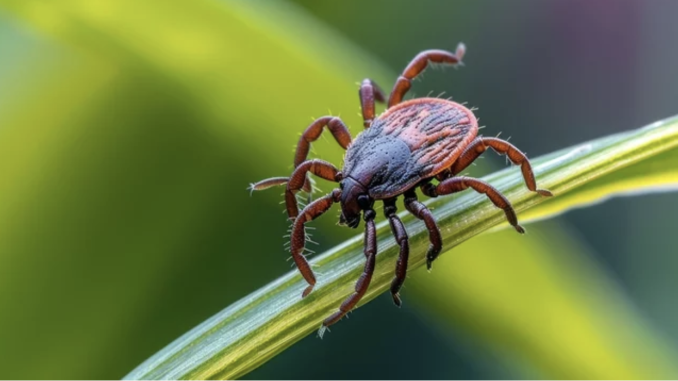
Summer is the time to get out and enjoy the North Fork’s natural beauty, in a garden, on a lawn, on a hike, or just on a stroll along one of the many nature trails — also the time of ticks, and serious diseases from their bites.
Scientists, along with Shelter Island’s Town deer and tick committee, have noted that increasingly warm winters over the last few years have been a factor in keeping ticks more active year-round. But summer is their time to really thrive. When they bite and infect a human, it’s not a minor event; Lyme disease and other tick-related illnesses initially produce fever, chills and severe head and muscle aches.
The National Institute of Allergy and Infectious diseases has stated: “The most distinct symptom of Lyme disease — the circular red rash known as erythema migrans (EM) — does not appear in at least one-quarter of people who are actually infected with Lyme bacteria. Also, current diagnostic tests do not always detect early Lyme disease since antibodies take time to rise to detectable levels. Because treatment is generally more effective in early stages of the disease, it is important to develop new tools that can help doctors make an early diagnosis.”
Stony Brook Southampton Hospital’s Regional Tick-Borne Disease Center in Hampton Bays is the first, and so far the only, tick clinic in the Northeast, specializing in diagnosing and treating children and adults with tick-borne illnesses. According to hospital officials, Stony Brook hospitals across Long Island have seen a spike in cases since March, and believe the trend will continue now that summer is here.
Last August, a “skyrocketing” increase in ticks wasn’t manifesting itself in people developing tick-borne diseases, according to Dr. James Bevilacqua, chairman of Shelter Island’s deer and tick committee. Numbers weren’t exact, he said, but the best local information came last summer from the number of people being prescribed doxycycline — a class of medications to treat infections.
The tick-borne disease babesiosis has been said to be increasing, but the black-legged ticks responsible for the spread of the disease were not up significantly last summer on Shelter Island, according to Beau Payne, who works for the local police department in two roles — assisting with animal control incidents and as a bay constable.
Since 2019, when the state Department of Environmental Conservation banned the use of 4-poster units — feeding stands that brush deer with a tickicide, permethrin — strategies to combat ticks have had to change. Shelter Island was among the first communities used as a test site for 4-posters when the program began in 2008. The town applied for an exemption to the ban, hoping to be able to continue the use of 4-posters, but the DEC refused.
This March, the island committee member leading the educational effort, Julia Weisenberg, has been working with fellow member Scott Campbell, Ph.D., who is the Suffolk County Department of Health Services Arthropod-Borne Disease lab director, to put in place efforts to step up a promotional campaign aimed at alerting residents to protecting themselves from tick-borne diseases.
Social media is being used to get out information to the community. Teaming up with Mashomack Preserve’s education and outreach coordinator Cindy Belt and outreach program coordinator Rebecca Kusa, Ms. Weisenberg worked with students in grades 3 through 6 on fun educational efforts to teach them ways to avoid tick bites.
All experts at town, county and state levels agree with Dr. Andrew Handel, a pediatric infectious disease expert from Stony Brook Children’s Hospital, that to avoid disease:
• When you go outside, be sure to wear mosquito or insect repellent. Be sure to apply insect or tick repellent containing 20%-30% DEET.
• Wear long pants and tuck the legs of the pants into your socks. This prevents ticks from crawling up onto your skin.
• When you come back inside, remove your clothes and shoes. Then, place them in the dryer on high heat for 10 minutes to kill any ticks that might be on them.
• Check your body, particularly in skin folds and hairy areas, for any ticks.

